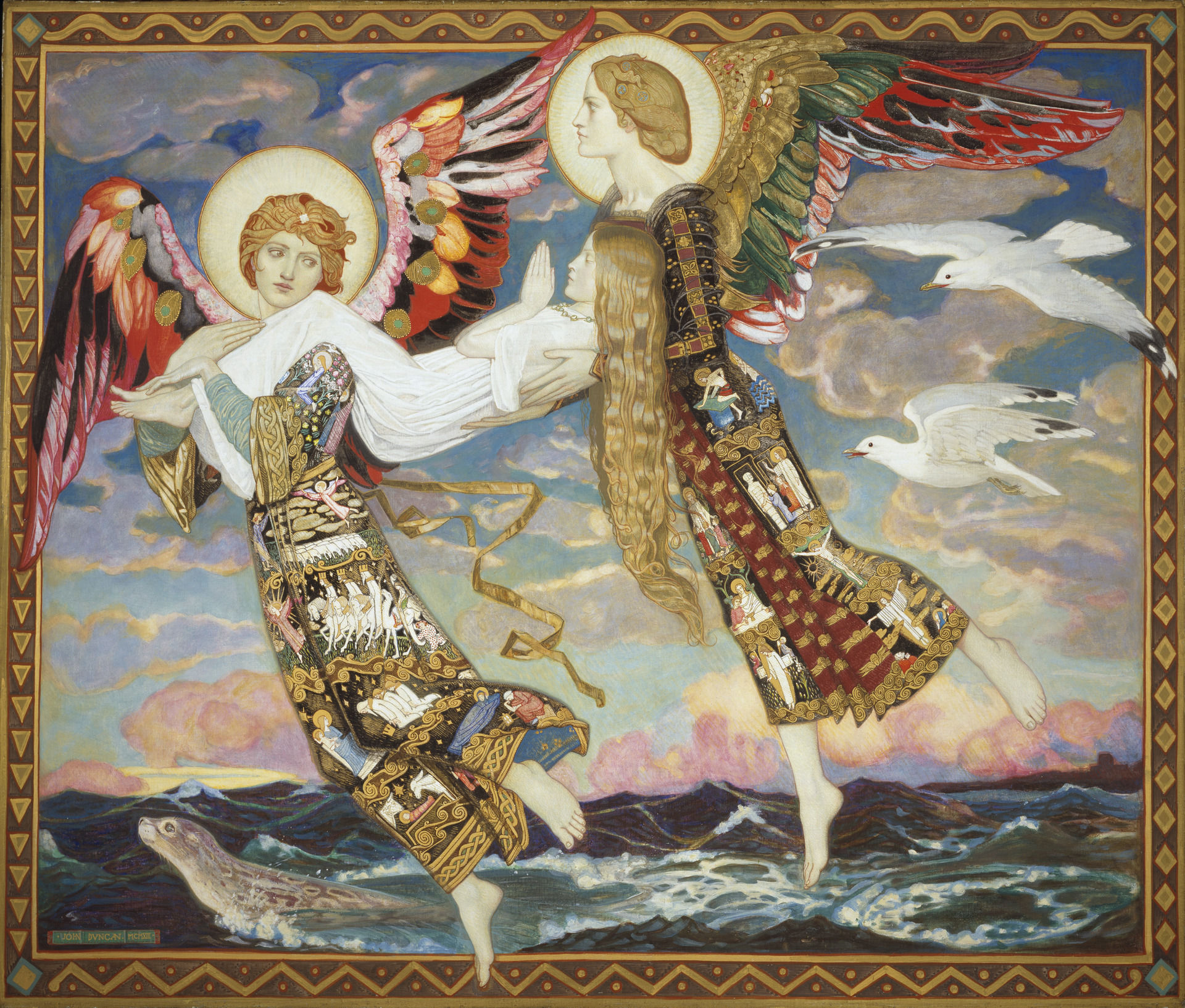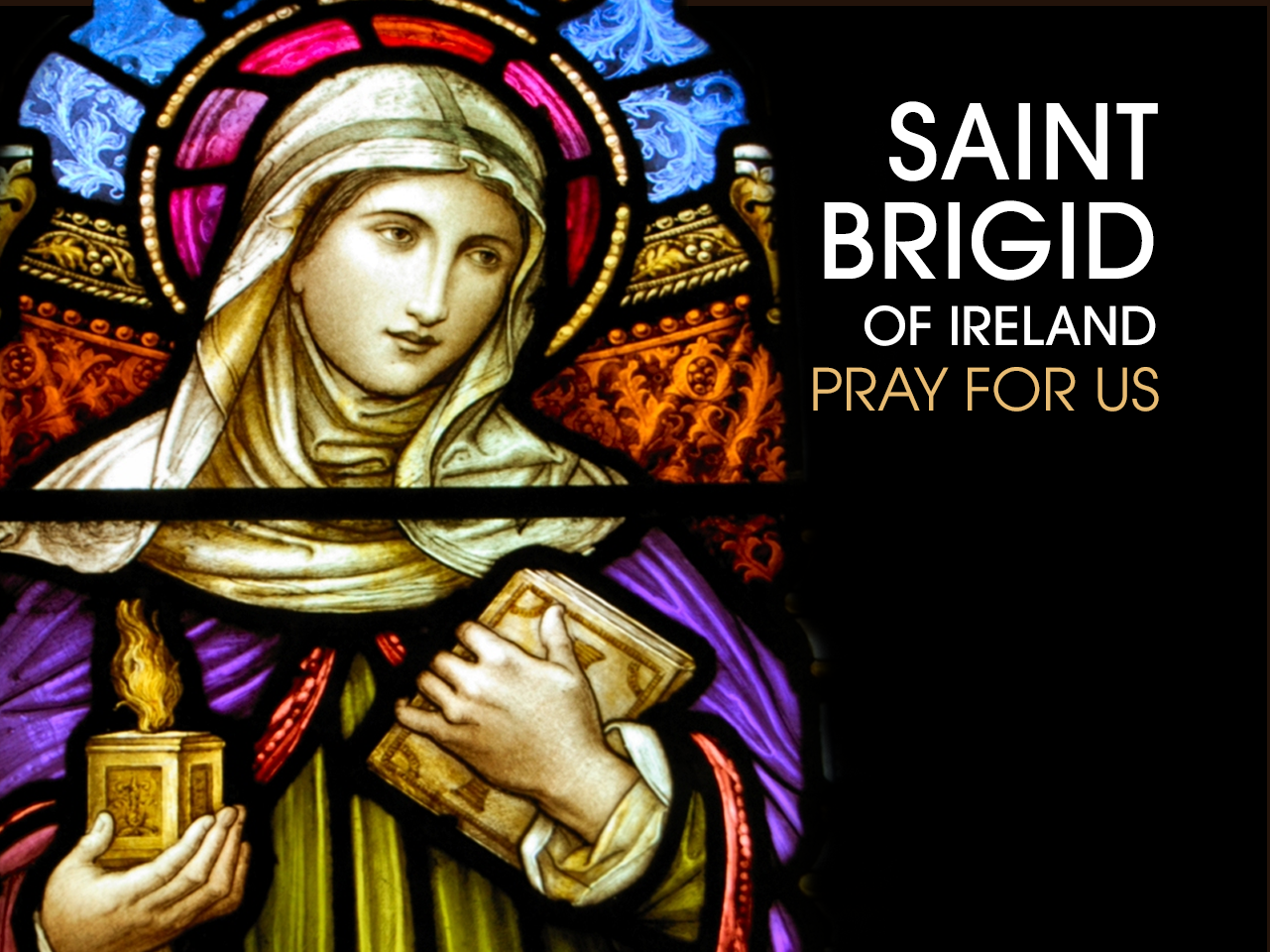
(I dated a Bridie with raven hair. But, of course you did Matt. 🙂 )

-by Michelle Arnold, Catholic Answers
“Imagine, in fifth-century Ireland, a young Christian slave. After years of servitude, this Christian was granted freedom, entered religious life, and set about evangelizing the native inhabitants of the Emerald Isle. This person was soon granted considerable juridical power to create stable, ordered Christian communities for the Church in the vast new mission territory of northern Europe. Legends abound of this saintly individual’s miraculous works, which were considered signs of God’s approval for the task of Christianizing pagans. Eventually the Church recognized this person as one of the patron saints of Ireland.
From my description, did you assume I was talking about St. Patrick? Because of his Confessio, in which he tells the story of his life, we know St. Patrick was sold into slavery in Ireland as a young man, gained his freedom, and then returned to his place of captivity as a bishop and evangelist of the Irish. The legend that he miraculously drove the snakes out of Ireland endures in the popular imagination.
But there’s another great Irish saint whose legend doesn’t get as much press.
The two Brigids
I was referring to St. Brigid of Kildare, whose feast we celebrate today. Born to a Christian slave and Irish chieftain, Brigid was eventually freed from slavery by her father and was received as a religious sister by a saintly bishop—possibly St. Mél. Later, Brigid was granted juridical power to establish monasteries for women throughout Ireland. (Some feminist Catholics believe she had episcopal powers, but there is no evidence that Brigid had a bishop’s power to ordain men to the priesthood.) Brigid is credited with even more miracles than Patrick, including changing water into beer, controlling the weather, and miraculously healing the sick.
In recent years, Brigid’s story has merged with the story of the Celtic goddess of the same name to such an extent that her very existence has been cast into doubt. Neo-pagans in particular claim that the Church appropriated the pagan goddess Brigid (similar to having an American saint named Bob) and turned her into a Christian saint as a way of converting the Irish pagans.
Is there any truth to this? Well, yes and no.
There is little historical reason to doubt that Brigid of Kildare existed. The first known biography of Brigid was written by St. Broccán within a century of her death—a date that would fall well within historical living memory. Contemporaries of Brigid’s who appear in the earliest biographies of the saint have been independently confirmed as having existed. Brigid’s own existence was not challenged until the late twentieth century.
Around the same time that Brigid’s existence first was questioned, the Church was revising its liturgical calendar, downgrading and even removing the feast days of saints whose historical authenticity was doubtful. Brigid remains a secondary patron saint of Ireland and is honored on February 1 in Ireland with a feast day (which ranks just under a solemnity in importance).
Nonetheless, we should acknowledge that there are legendary aspects to Brigid’s story that appear, at least on the surface, to mirror the goddess Brigid’s. They share the same name. Both are associated with fire, with healing, with controlling the weather, and are considered to be patrons of the home. Saint Brigid’s feast day falls on the same day as the goddess Brigid’s holiday, Imbolc. Many of the patronages that the Church grants to St. Brigid—among other things, she is a patron saint of Ireland, blacksmiths, poets, midwives, and babies—find echoes in the mythological patronages attributed to the goddess.
Pre-Christian pagan influences
The similarities are striking but not all that difficult to understand. Regarding the name, St. Brigid was born to a pagan father and Christian mother at a time when Celtic paganism still had a strong hold on the imagination of the Irish. For a baby girl, even one who was born to a Christian mother, to be named after a goddess would not have been remarkable. Fathers, especially those who also were rulers (as was Brigid’s father), ordinarily had naming rights for their children. And, at the time, even Christians were given pagan names. Pope John II, a contemporary of St. Brigid’s and the first pope to change his name upon election, was named by his parents for the Roman messenger god, Mercury.
As for the similar patronages and identical feast day, these too are easy to explain. The early Church did not evangelize Europe by stamping out all traces of pagan culture. The idea that any whiff of pre-Christian paganism smelled of the devil’s sulfur was a tactic used by Protestant Reformers in their attempts to discredit the Church. In some ways, this fear and uprooting of pre-Christian pagan cultural influences engaged in by the Reformers was a form of iconoclasm, a political and religious phenomenon by which dissidents tear down cultural identity markers as a means of challenging social norms.
The Church, on the other hand, always recognized that pre-Christian cultures had universal concerns and tangible goods. Concern for the needs of blacksmiths, midwives, and home life is not limited to pagans; a love of beer and poetry is not inherently evil. Transferring patronages for these needs and goods from a mythological goddess to a Christian saint was simply a way to preserve what was valuable in a pre-Christian culture for the Christian generations to follow. Establishing the saint’s feast day to coincide with the earlier pagan holiday merely ensured that Christian converts could celebrate the return of spring in a Christian manner at the same time of year that their pagan ancestors had always celebrated springtime.
St. Brigid and St. Patrick
A lot of ink has been spilled comparing St. Brigid to the goddess Brigid, but little note has been taken of the complementarity of the stories of St. Brigid and St. Patrick. As I noted, their life stories are remarkably similar and their accomplishments in the evangelization of Ireland cannot be underestimated. Together, these two saints forged a Catholic identity among the Irish that continues to this day. It has persevered through religious and political persecution and endures despite severe modern secular challenges.
Although it is doubtful that St. Brigid and St. Patrick toiled literally side by side in the mission fields of Ireland—Patrick may have died decades before Brigid rose to prominence—the Book of Armagh, a ninth-century Irish manuscript, includes a passage on the spiritual relationship between these two Irish saints:
Between St. Patrick and St. Brigid, the pillars of the Irish people, there was so great a friendship of charity that they had but one heart and one mind. Through him and through her, Christ performed many great works.”
O God, the Author of all sanctity, grant that we who inhabit the Island of Saints, may, through the intercession of St. Bridget, walk in their footsteps on earth, and so arrive with them to the possession of You in Heaven. Through Jesus Christ our Lord. Amen. -Litanty of St Bridget of Ireland
“St. Bridget once received and bore patiently a succession of trials from various persons. One of them made an insulting remark to her; another praised her in her presence, but complained of her in her absence; another calumniated her; another spoke ill of a servant of God, in her presence, to her great displeasure; one did her a grievous wrong, and she blessed her; one caused her a loss, and she prayed for her; and a seventh gave her false information of the death of her son, which she received with tranquility and resignation. After all this, St. Agnes the Martyr appeared to her, bringing in her hand a most beautiful crown adorned with seven precious stones, telling her that they had been placed there by these seven persons. Then she put it upon her head and disappeared. How could so much have been gained by any other exercise?
—Cultivating Virtue: Self-Mastery With the Saints
“I would like the angels of Heaven to be among us. I would like an abundance of peace. I would like full vessels of charity. I would like rich treasures of mercy. I would like cheerfulness to preside over all.”
—St. Brigid of Ireland
Love & saints preserve us!!!
Matthew

